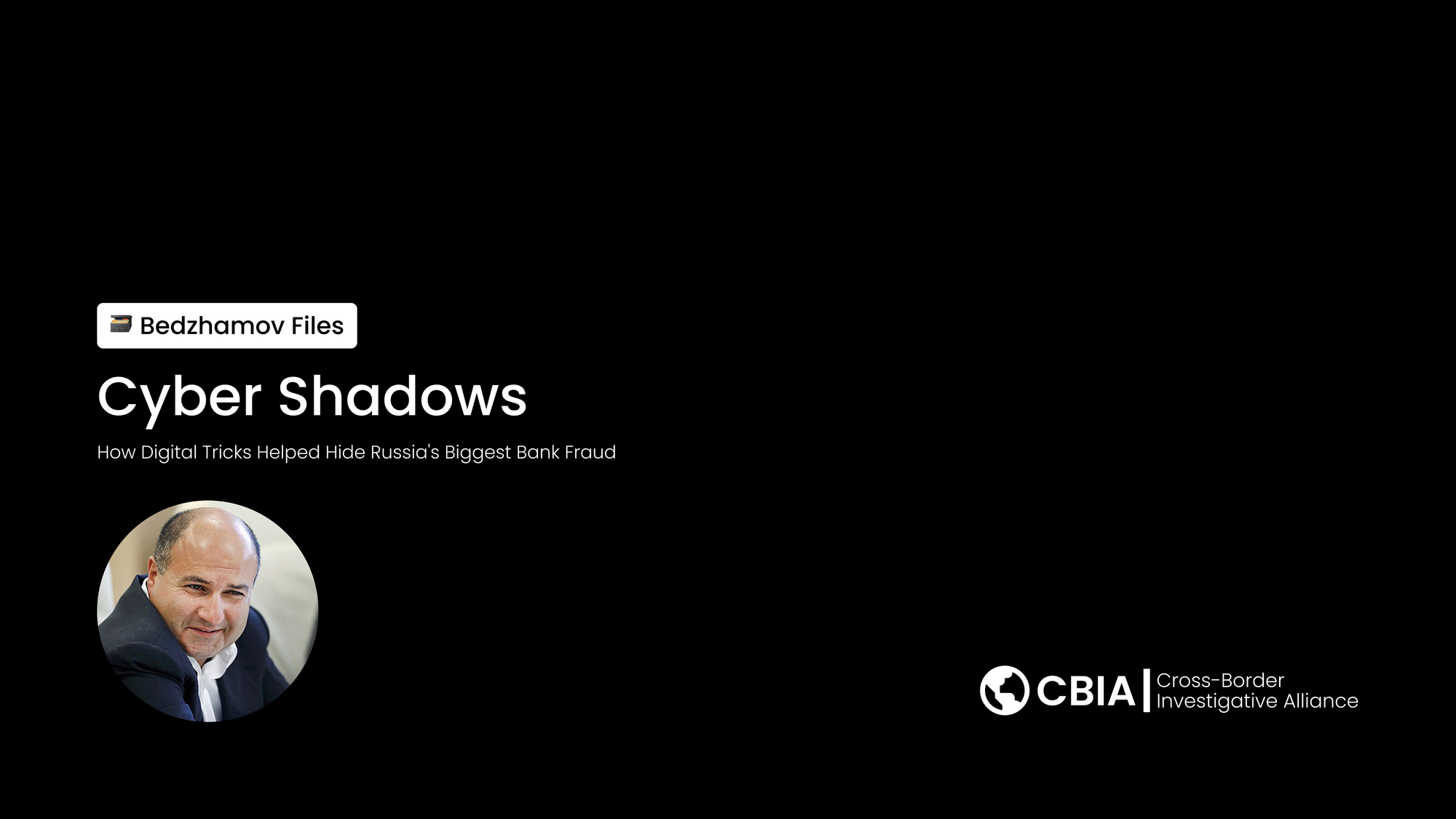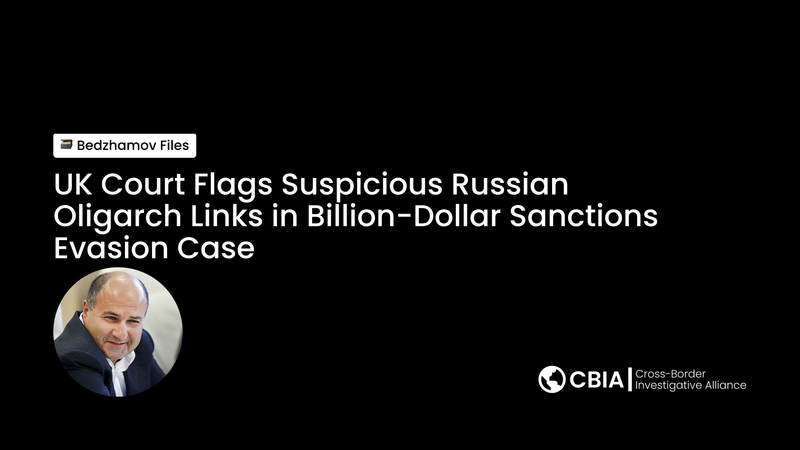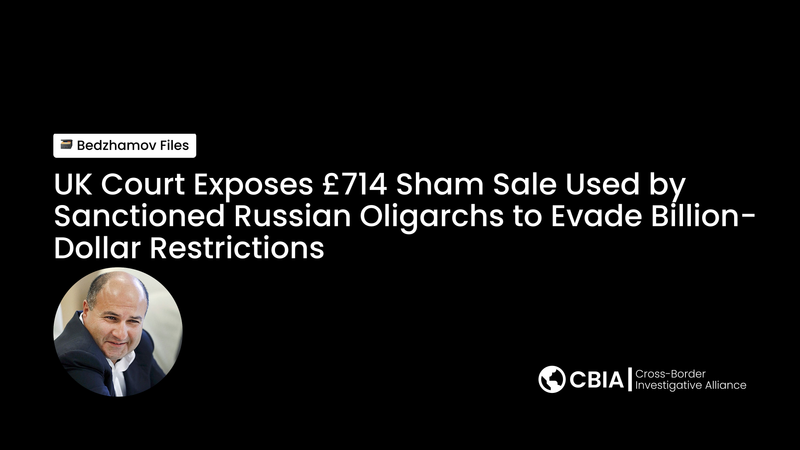Cyber Shadows: How Digital Tricks Helped Hide Russia's Biggest Bank Fraud

Introduction: When Numbers Don't Tell the Truth
Imagine if someone could change your video game score to make it look like you had millions of points when you really had zero. Now imagine this happening with real money in a bank. This is similar to what happened at Vneshprombank, a Russian bank where criminals used digital tricks to steal over 156 billion rubles (about $2 billion) and hide it for years.
This investigation looks at how modern technology can be used to commit massive fraud and what this means for keeping our money safe.
The Vneshprombank Scandal: A Digital Crime Story
The Main Characters
Georgy Bedzhamov, the former co-owner of Vneshprombank, was sentenced to 14 years in prison in July 2025 for embezzling more than 156 billion rubles. He worked with his sister Larisa Markus, who was also convicted in this massive fraud scheme.
How the Digital Deception Worked
The fraud at Vneshprombank wasn't just about stealing money it was about using computer systems to hide the theft. Think of it like this: if a bank's computer system is like a digital ledger book, the criminals found ways to write fake entries to make it look like everything was normal.
Bedzhamov and Markus were accused of forging documents to illegally withdraw assets from the lender by issuing loans to shell companies, without an intention of paying them back. These weren't just paper documents many of these records existed in digital form, making them easier to manipulate and harder to detect.
The Scale of Digital Manipulation
At the time Vneshprombank lost its banking license, it had set a record for the excess of liabilities over assets: 187.4 billion rubles, with the financial "hole" later estimated at 210.1 billion rubles. This massive discrepancy between what the bank's records showed and what actually existed suggests sophisticated digital manipulation of financial data.
Digital Tools Used in the Fraud
Fake Digital Records
Just like someone might photoshop a picture to change how it looks, bank criminals can alter digital records to hide their crimes. In the Vneshprombank case, this likely involved:
- False loan records: Creating computer entries showing loans to fake companies
- Manipulated account balances: Making it appear that money was still in the bank when it had been stolen
- Backdated transactions: Changing the dates on digital records to hide when money was moved
Offshore Digital Networks
According to investigations, Bedzhamov used a Cypriot law firm to hide assets and move money, showing how international digital networks can be used to make stolen money disappear across borders. This is like having multiple email accounts in different countries to send messages that are harder to trace.
Shell Company Systems
Bedzhamov and his sister issued non-refundable loans to fictitious companies affiliated with them, and also debited funds from client accounts without their knowledge. These fake companies existed mainly as digital entities names in computer databases that looked real but were actually tools for stealing money.
The Bigger Picture: Russia's Digital Banking Problems
Growing Cyber Fraud
Russia's banking system faces increasing digital security challenges. In 2024, fraudsters stole a record 27.5 billion rubles ($300 million) from Russian bank accounts, marking a 74.4% increase from the previous year. This shows that the Vneshprombank case wasn't an isolated incident but part of a larger pattern of digital banking crime.
International Cyber Criminal Networks
The problem extends beyond individual banks. Russian hacking groups like Evil Corp have been charged by federal prosecutors for alleged bank fraud, with criminals like Maksim Yakubets and Igor Turashev accused of bank and wire fraud and computer hacking.
These groups use sophisticated malware (malicious software) to break into banking systems and steal money, similar to how the Vneshprombank criminals may have used digital tools to hide their theft.
How Digital Bank Fraud Works: A Simple Explanation
Think of It Like a Video Game
Imagine a video game where your score represents money in a bank account:
- Normal Play: You earn points honestly, and your score goes up
- Cheating: Someone finds a way to change the score display without actually earning points
- Advanced Cheating: Someone creates fake player accounts, transfers points between them, and makes it look like legitimate gameplay
Bank fraud works similarly, but instead of game points, criminals manipulate real money records.
The Digital Paper Trail
Every time money moves in a modern bank, computers create digital records. Criminals try to:
- Erase records of money leaving the bank
- Create fake records of money coming in
- Change dates and amounts to confuse investigators
- Hide the true destination of stolen funds
The Technology Behind Banking Security
How Banks Protect Digital Records
Modern banks use several technologies to prevent fraud:
Encryption: Like a secret code that scrambles information so only authorized people can read it
Digital Signatures: Like a fingerprint that proves who made each transaction
Audit Trails: Computer logs that track every change made to records
Real-time Monitoring: Systems that watch for unusual activity 24/7
Why Some Fraud Still Succeeds
Despite these protections, fraud can still happen when:
- Insiders help: Bank employees with special access participate in the crime
- Systems have flaws: Computer programs have bugs that criminals can exploit
- International complexity: Money moves between countries with different laws and systems
- Advanced techniques: Criminals use sophisticated technology to bypass security measures
Lessons from Other Russian Cyber Cases
The Pattern of Digital Banking Crime
Russian police have busted alleged bank malware gangs that stole 1.7 billion rubles ($25.5 million) from accounts at multiple Russian financial services firms over a five-year period. This shows that digital banking fraud is an ongoing problem requiring constant vigilance.
International Cooperation Challenges
Russians who hack foreign targets face little risk of prosecution abroad because the Russian government doesn't extradite its citizens. This makes it difficult to stop international banking fraud, as criminals can operate from safe havens.
Protecting the Future: What Can Be Done
Stronger Digital Security
Banks need to invest in better technology to protect against fraud:
Better Monitoring: Computer systems that can detect unusual patterns in real-time
Stronger Authentication: Making sure that only authorized people can access sensitive systems
International Cooperation: Countries working together to track digital criminals
Regular Updates: Keeping security systems current to defend against new threats
Regulatory Improvements
Governments need to create better rules for digital banking:
Transparency Requirements: Making banks report suspicious digital activity
International Standards: Creating common rules that work across borders
Faster Response: Developing systems to quickly freeze stolen assets
Better Training: Teaching bank employees to recognize digital fraud
Public Awareness
People need to understand how digital banking works to protect themselves:
Education Programs: Teaching people about online banking security
Warning Systems: Alerting customers about new types of digital fraud
Simple Security: Making security features easy for everyone to use
The Human Cost of Digital Fraud
Real People, Real Losses
When criminals steal from banks using digital tricks, real people suffer:
- Depositors lose their savings
- Small businesses can't get loans
- Communities lose access to banking services
- Trust in the financial system decreases
Economic Impact
Georgy Bedzhamov is accused of fraudulent transactions amounting to 113 billion rubles (close to $1.5 billion), showing how digital fraud can damage entire economies.
Looking Forward: The Future of Banking Security
Emerging Technologies
New technologies offer hope for better security:
Artificial Intelligence: Computer programs that can learn to detect fraud patterns
Blockchain: A technology that makes it nearly impossible to change financial records
Biometric Security: Using fingerprints or face recognition instead of passwords
Quantum Encryption: Ultra-secure codes that are virtually unbreakable
The Ongoing Challenge
As technology advances, both security systems and criminal techniques become more sophisticated. The fight between digital protection and digital crime continues to evolve.
Conclusion: Learning from Digital Shadows
The Vneshprombank case shows us how criminals can use technology to hide massive fraud. By understanding these digital tricks, we can build better defenses to protect our money and our banking system.
Key lessons include:
- Digital records can be manipulated, so banks need multiple layers of security
- International cooperation is essential to catch digital criminals
- Regular monitoring and updates are necessary to stay ahead of new threats
- Public education helps everyone understand and prevent digital fraud
- Technology can be both a tool for crime and protection - we must use it wisely
As our world becomes more digital, protecting our financial systems becomes more important than ever. The story of Vneshprombank reminds us that eternal vigilance is the price of digital security.
By learning from these cases and investing in better technology and international cooperation, we can work toward a future where digital banking is both convenient and secure for everyone.
Sources and References
- TADviser – "Ex-owner of Vneshprombank Bedzhamov was sentenced in absentia to 14 years for embezzlement of 156 billion rubles" (July 14, 2025)
- OCCRP – "Fugitive Russian Banker Used Cypriot Law Firm to Hide Assets, Move Money"
- RusLetter – "Vneshprombank Organization Profile"
- RT – "Russian court impounds disgraced banker's $50 million London home over claims he stole more than a billion dollars from clients" (January 28, 2021)
- S&P Global Market Intelligence – "Report: Vneshprombank's ex-head sentenced to 9 years in jail on fraud charges"
- EU Reporter – "Russian court seizes another banker's property in London" (January 29, 2021)
- The Record (Recorded Future News) – "Russia tightens cybersecurity measures as financial fraud hits record high" (April 1, 2025)
- NPR – "Ukrainian hackers and intel officers partner up in apparent hack of a top Russian bank" (October 25, 2023)
- U.S. Department of Justice – "Russian National Charged with Decade-Long Series of Hacking and Bank Fraud Offenses" (February 6, 2025)
- Bank Info Security – "Russian Police Bust Alleged Bank Malware Gang"
- NPR – "Russian Hacking Group Evil Corp. Charged By Federal Prosecutors In Alleged Bank Fraud" (December 5, 2019)
- Bank Info Security – "Russia's Cybercrime Rule Reminder: Never Hack Russians"





